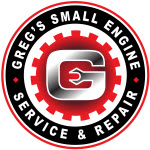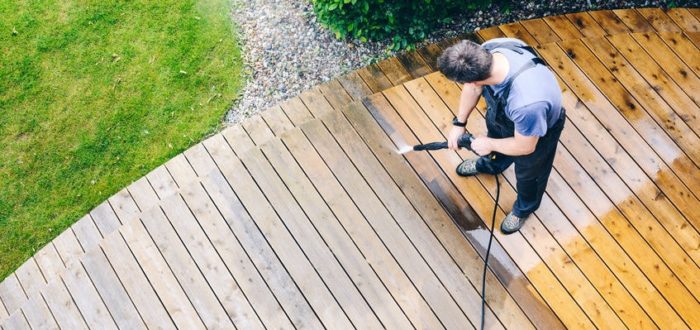A pressure washer is a powerful tool that is great for cleaning exterior surfaces. They are more effective and quicker than using a traditional scrub brush. Pressure washers are available for rent or purchase and can either be gas or electric powered. Due to the high pressure they produce, it is important that you understand how to operate pressure washers efficiently and safely before using. There is a risk of damage to property or accidents if pressure washers are not used correctly.
How pressure washers work
There are two types of pressure washers – gas and electric. These motors run a pump that pressurizes water from the garden hose which is then forced through a spray wand. This pressure can be as high as 1000-3000 pounds per square inch (PSI). The higher the PSI, the tougher the dirt and grime it can handle. Both types of pressure washers require an uninterrupted and steady supply of water.
Electric-powered washers are normally on the lower end with an average of 1300-1400 PSI. They are ideal for light-duty to medium cleaning jobs like cleaning outdoor grills or washing cars and garage floors. They are generally more affordable, lighter in weight, more portable, and quieter. Most homeowners need this type of pressure washer.
Gas-powered ones are more equipped for tougher jobs as the PSI averages around 2000-2800. They can handle heavy-duty cleaning jobs such as preparing siding for painting, deep-cleaning concrete, paint removal, farm equipment cleaning, or aging wood stain removal.
Preparation
- Wear proper safety attire – it is important to have protective footwear and safety goggles before turning on the pressure washer. Make sure that your footwear has rubberized soles to lessen the danger of slipping on wet surfaces. Cover your legs and arms from flying debris by wearing a long-sleeved shirt and long pants.
- Cover or move any plants or breakable objects.
- Plug the electric-powered machine into a properly grounded outlet. When plugging in, make sure to use only 12- or 14-gauge extension cords and connect to power outlets protected by a GFCI or ground fault circuit interrupter. For gas-powered pressure washers, fill the machine with gasoline and engine oil. Hold the start grip and pull.
- Connect the hose to the machine’s water inlet. To prevent any damage to the pump, turn on the water supply first before turning on the pressure washer.
- If you want some extra powerful cleaning, fill the reservoir with a cleanser or detergent solution.
- Attach the correct spray tip to the nozzle. It is important to read the user’s manual before operating the pressure washer as certain procedures may be required when using a cleanser or detergent.
Operation
- To start, position the spray tip by about 2 feet from the surface, and then slowly move the tip closer. There is a risk of damage if you position the tip closer than 30 cm or 12 inches.
- To help direct loosened dirt and debris away from you, position the nozzle at a 45-degree angle to the surface. Begin spraying water by pulling the trigger.
- Avoid spraying too long in one area. Move the spray in a side-to-side direction.
- When applying a detergent, let it soak for at least 2-3 minutes before rinsing the surface. Make sure not to wait too long for the solution to dry. Spray water from the top down to rinse.
- To flush the detergent from the machine, read the instruction manual as it will tell you how to do it.
Pressure washer safety tips
If misused, pressure washers can cause serious injury and damage to property. Aside from wearing proper attire, it is also important to remember to keep your hands or any part of your body away from the washer spray. Don’t point it at people or pets either. The pressure from the nozzle is strong enough that it can penetrate your skin and cause serious cuts.
Ladders are also a big no-no when using a pressure washer. Once you start squeezing the trigger, the machine can create a serious kickback force which is strong enough to throw you off balance and cause a nasty fall. It is best to use high extension wands for hard-to-reach areas or, better yet, call a professional cleaner to handle the job.






















